When we read Arshia Sattar's gripping retelling of the classic Hindu epic Ramayana, we were blown away. Arshia takes an incredibly dramatic story—an army of flying monkeys, an evil demon king, a beautiful princess in distress, a hero who discovers his own secret powers—and brings it vividly to life in lucid, artful, and propulsive prose that honors the original ancient text by the Sanskrit poet Valmiki. Making the book even more vidid are artist Sonali Zohra's stunning illustrations: twenty two-page spreads in bright color, sharp detail, and astonishingly original conception. See the gallery below for a preview the images, which will be even more gorgeous in the finished, hardcover book—out March 2018 from Yonder!
Gallery: Sonali Zohra's Illustrations from Ramayana
Sonali Zohra: Artist's Statement
Growing up in India, not knowing the story of the Ramayana or at least a general outline of what it is about is unlikely. It is India’s great archetypal story, one that shows up everywhere. It is in the fabric of our culture and has been presented in a variety of styles and mediums—be it architecture, painting, illustration or sculpture—over the span of two thousand years.
The opportunity to illustrate the Ramayana, particularly this version translated and rewritten by Arshia Sattar from Valmiki’s original, was something out of a dream. As a child I was fascinated by indigenous folk artist Badri Narayan’s illustrations of the Mahabharata written by Shanta Rameshwar Rao. The illustrations portrayed the gods and goddesses in an almost human form—and, in my eyes, a more relatable form compared to the popular religious depictions of the characters. This seemed to fit Arshia’s style of writing: mystical yet so relatable. Inspired by the text, I began drafting my visions of this great story.
I wanted the illustrations to be dark and detailed silhouettes against bold colours in the hope of translating the mood and tone of Arshia’s descriptions. As an artist, the process is sometimes greater than the end goal. This process was almost meditative—it brought me closer to understanding the intricacies of the scenarios within the story and opened up a whole new way of setting the scene for the text to follow.
—Sonali Zohra


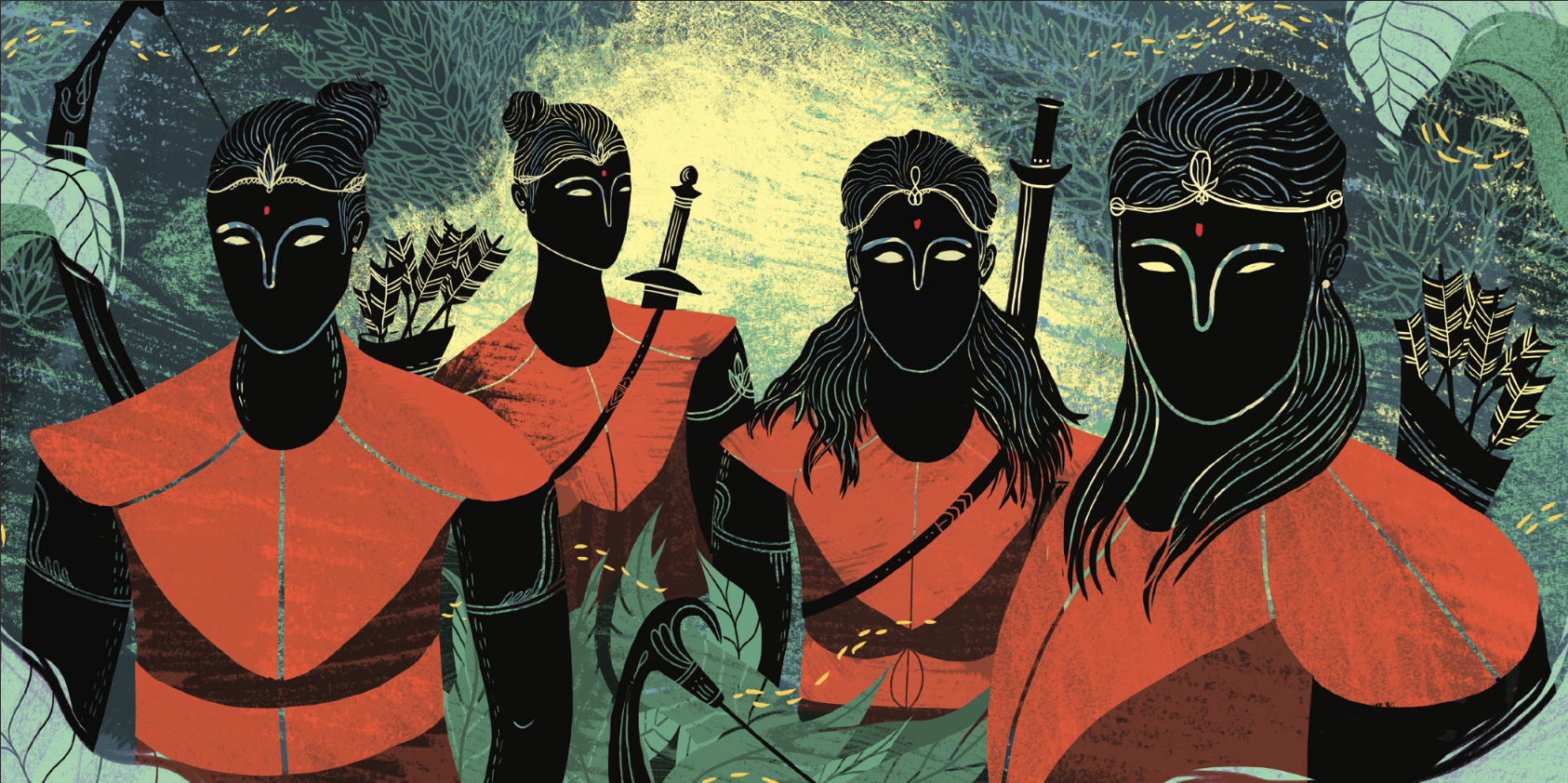









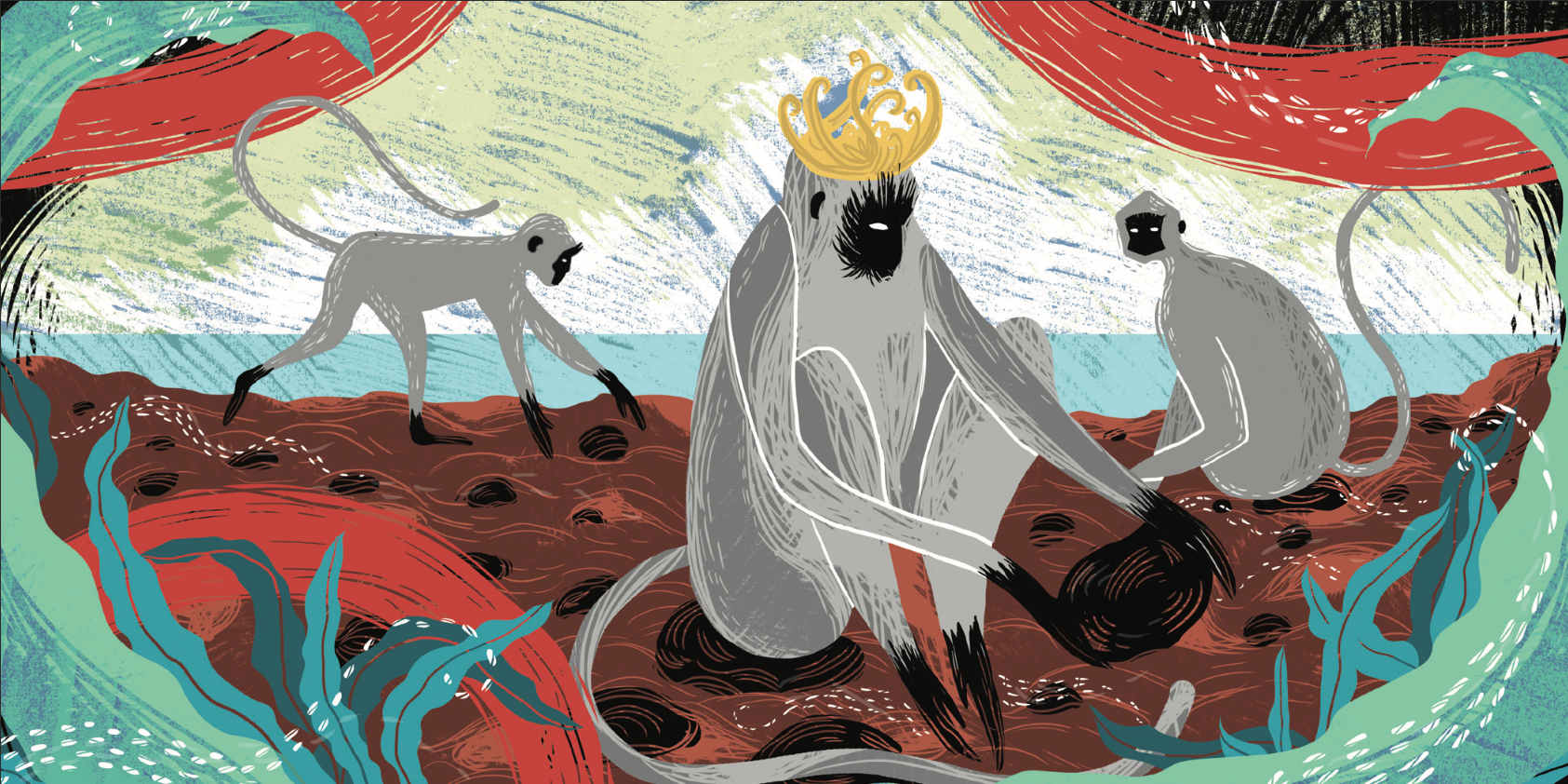

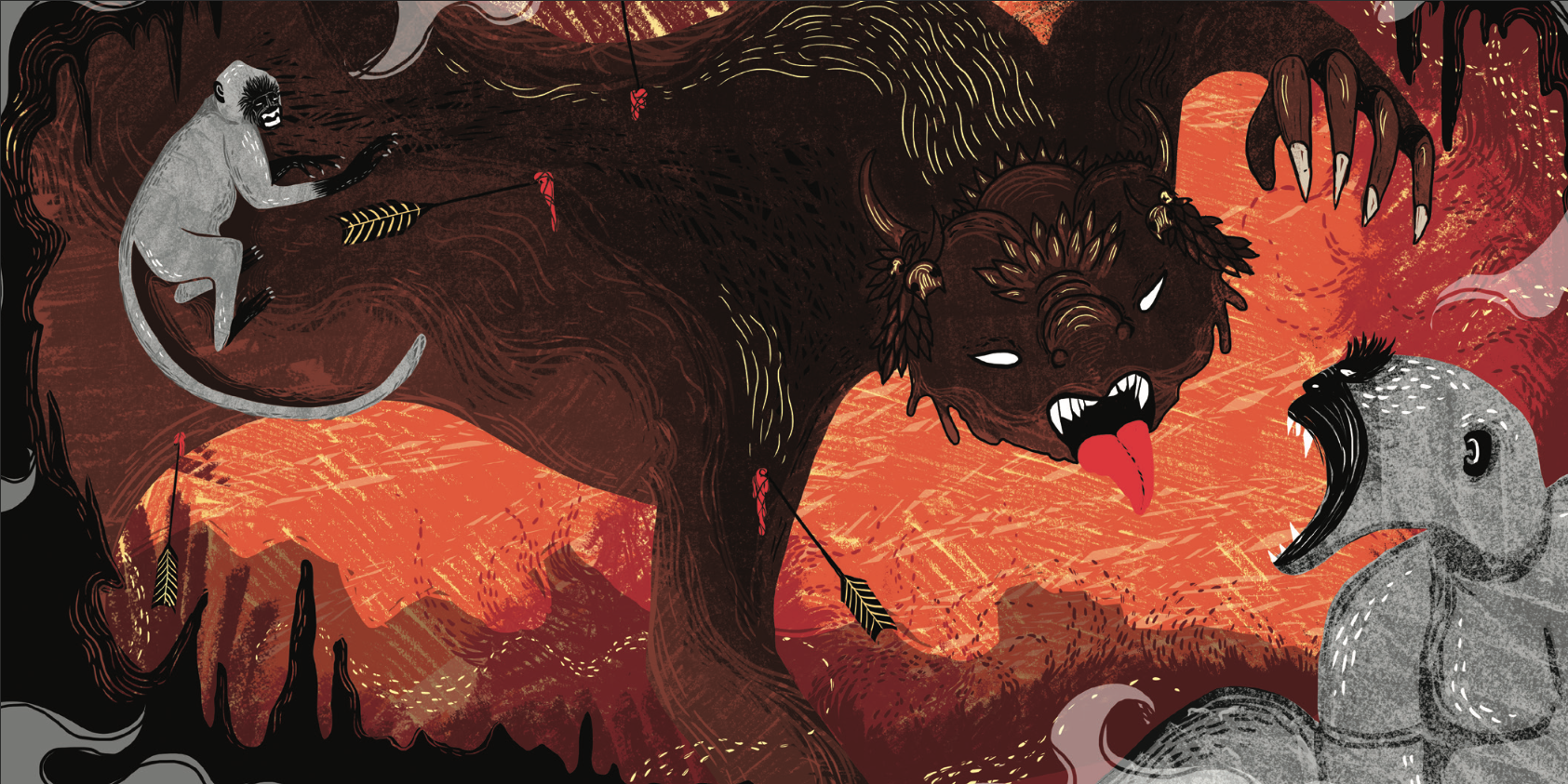

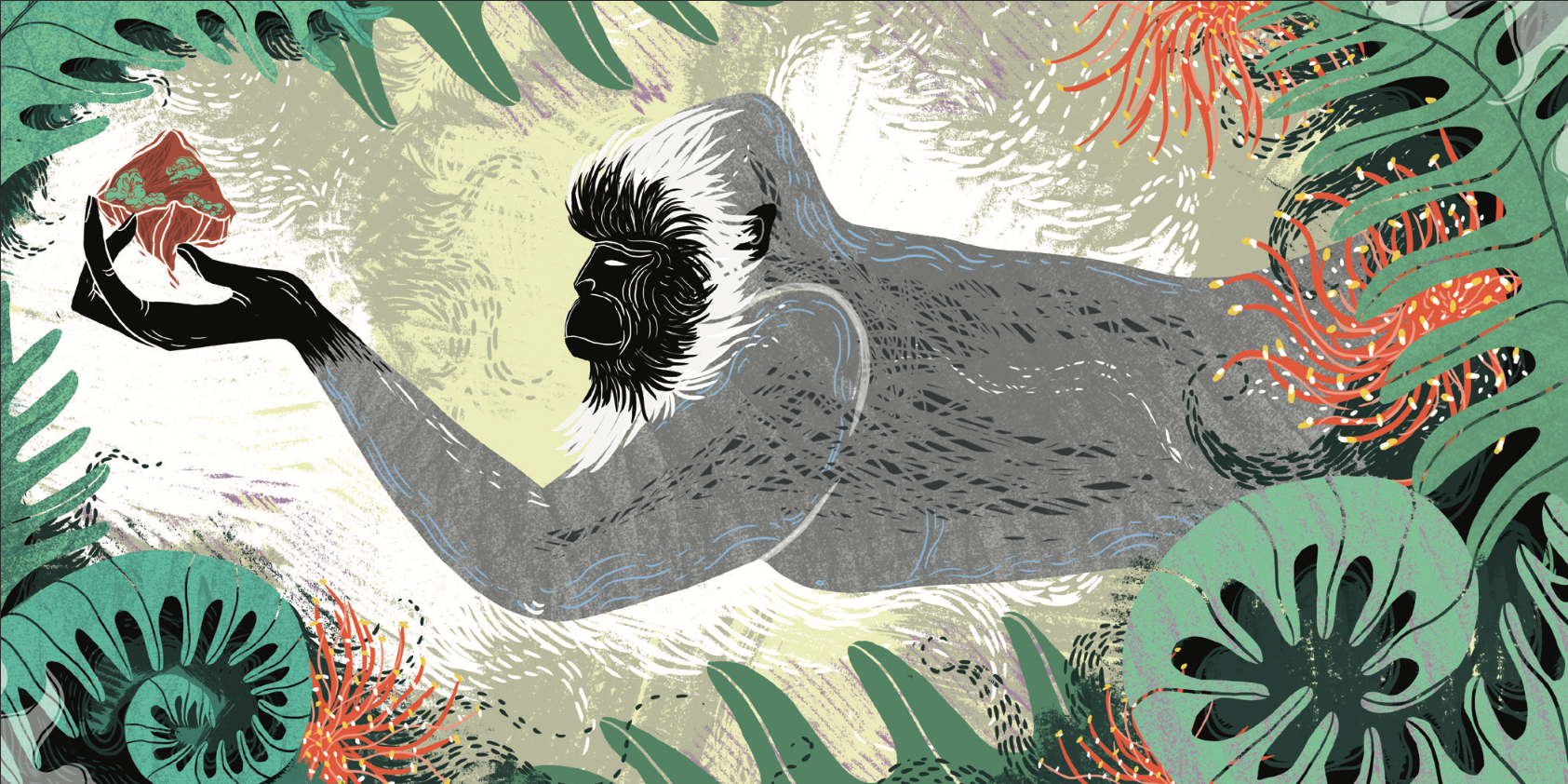

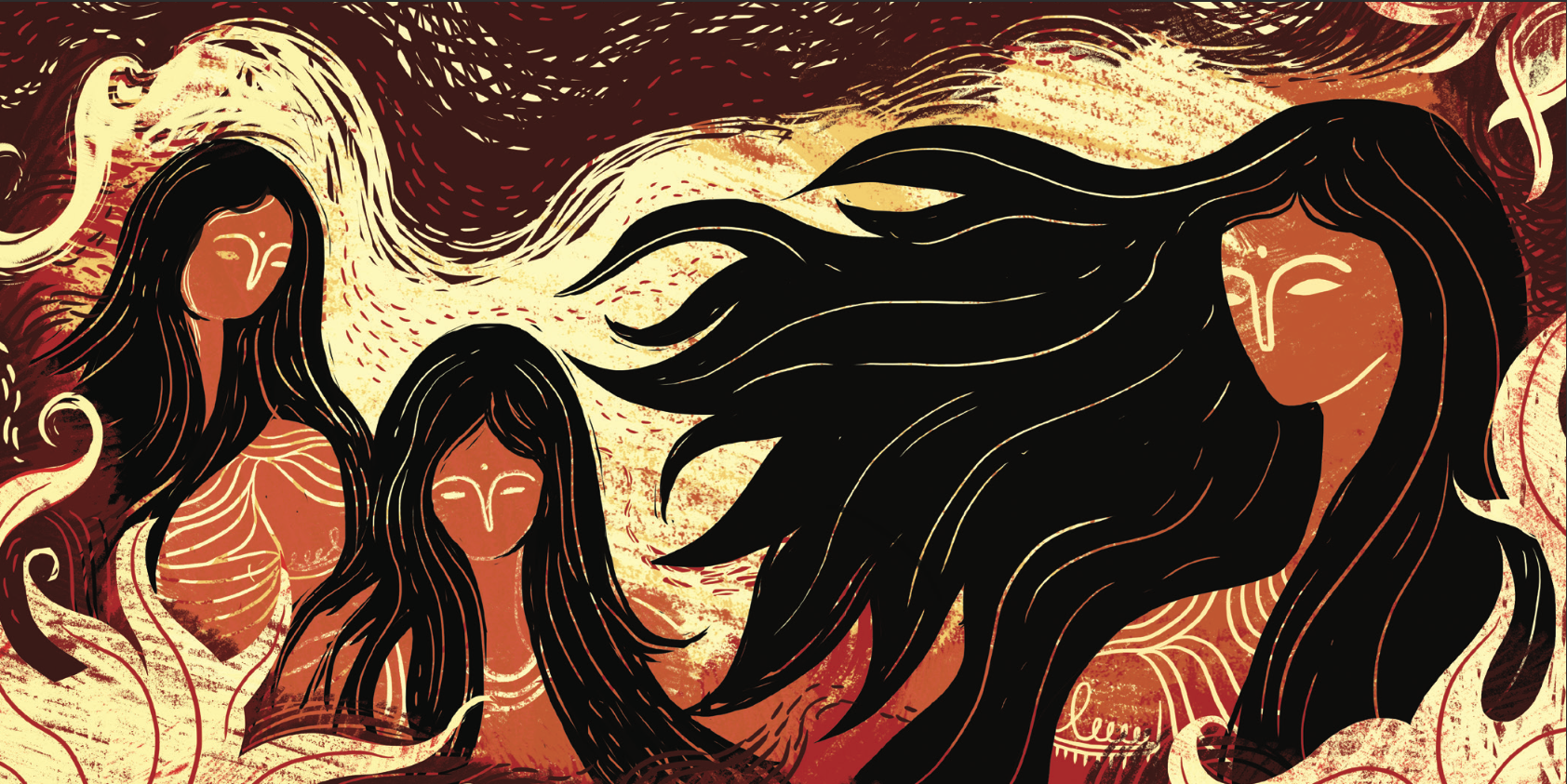

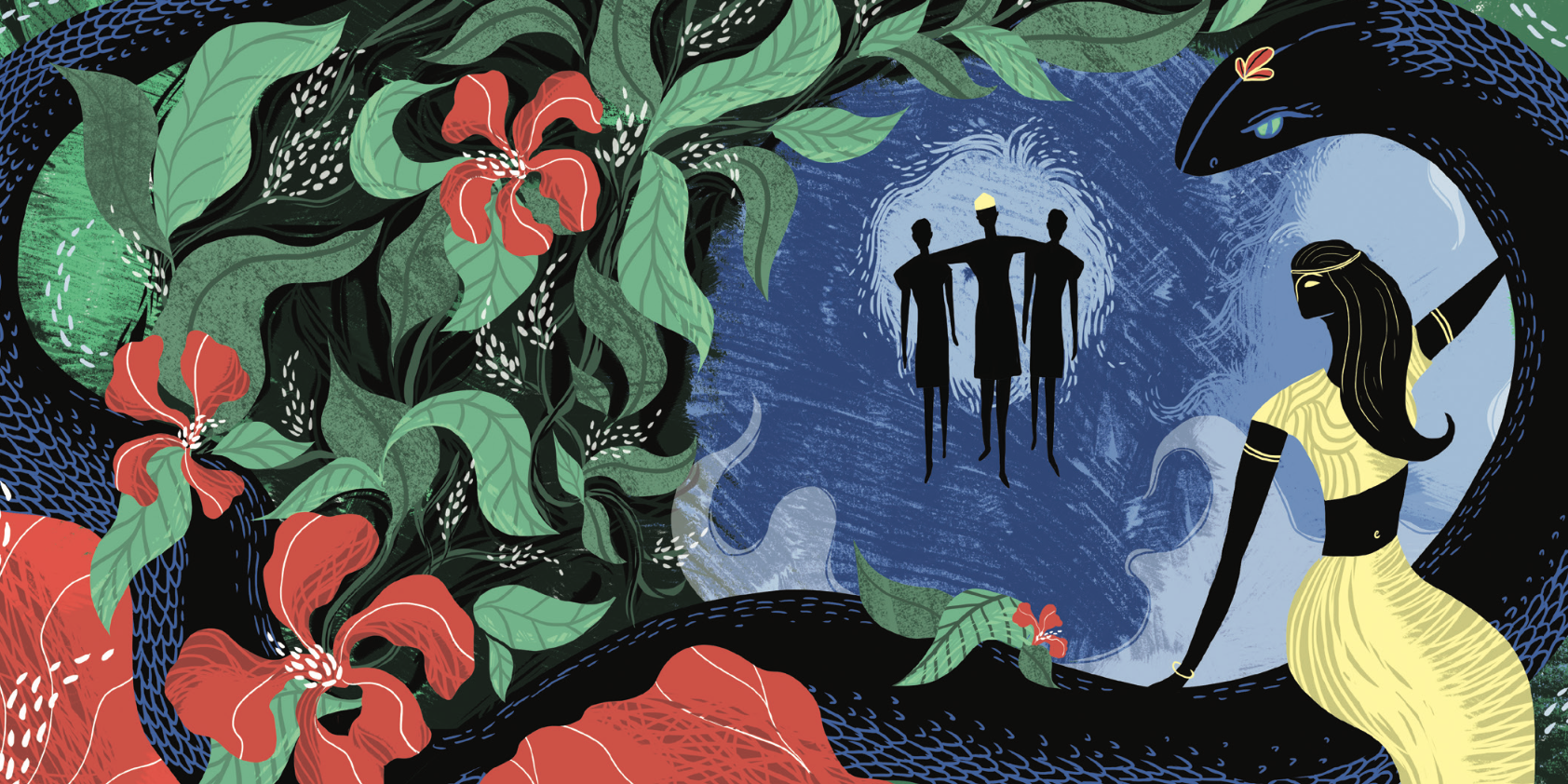
By Arshia Sattar
Illustrations by Sonali Zohra
Yonder: Restless Books for Young Readers
One of the world’s oldest and best-loved tales, now retold and illustrated in thrilling detail for readers of all ages.
Hardcover • ISBN: 9781632061775
Publication date: May 8, 2018